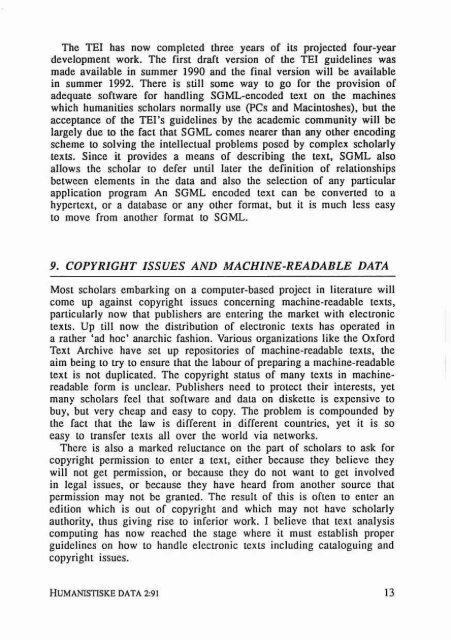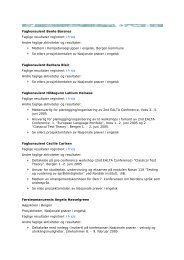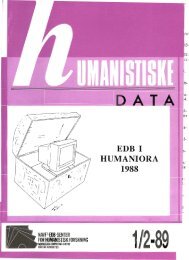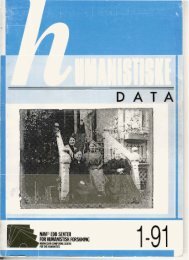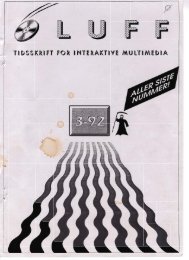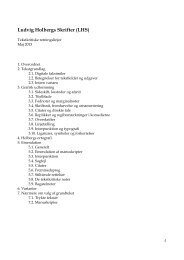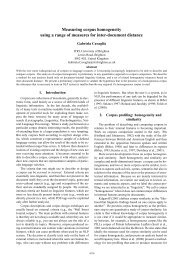1991:2 - Universitetet i Bergen
1991:2 - Universitetet i Bergen
1991:2 - Universitetet i Bergen
Create successful ePaper yourself
Turn your PDF publications into a flip-book with our unique Google optimized e-Paper software.
The TE1 has now cornpleted three years of i& projected four-year<br />
developrnent work. The first draft version of the TEI guidelines was<br />
made avaiIab1e in summer 1990 and the final version will be available<br />
in summer 1992. There is still some way to ga for the provision of<br />
adequatc software for handling SGML-encodcd text on the rnachines<br />
which humanities scholars normall y uce (PCs and Macintoshes), bul the<br />
acceptance of the TET'S guidelines by the academic community will be<br />
largely duc to the fact that SGML cornes nearer than my other encoding<br />
scheme to solving Lhe intelfcctual probIcrns posed by cornplex schcilarIy<br />
texts. Since it provides a means of describing the text, SGIVn, also<br />
aIlowc the scholar 10 delet unril later the definition or rclationships<br />
bctwecn eIements in the data and also the selection of my particular<br />
application program An SGML encoded text can bc converted lo n<br />
hypertext, or a daubase or any othes format, bul it is much less easy<br />
to move from another format. to SGML.<br />
9. COPYRIGHT ISSUES AND MACHINE-READABLE DATA<br />
Most schelars cmbarking on a computer-based project in literature will<br />
come up against copyrighl issues concerning machine-readable texts,<br />
parBcuIarly now that pubIishers are entering the market w ilh electronic<br />
texts. Up til1 naw the distribution of eIecwonic texLs has operaled in<br />
a rathcr 'ad hoc' anarchic fashion. Various organizarions Iike the Oxford<br />
Text Archive have set up repositories of machine-readable texts, the<br />
aim being to try to ensure that Lhe labour of preparing a rnachine-teadable<br />
text is not duplicated. The copyright status of many tcxtc in machinereadable<br />
form is unclear. Publishers aeed to prolec~ [tieir inlerests, yet<br />
many scholars feel that software and dala on diskette is expensive to<br />
buy, but very cheap and easy to copy. The problem is compounded by<br />
the fact that the law is dirfereni in different countrfcs, ycl it is so<br />
=sy ro transfer tcxts all ovcr the world via networks.<br />
Therc is als0 a marked reluctrince on the part of scholars to ask ror<br />
copyright pcrmission to enker a tcxt, either because they believe they<br />
will not get pennission, or because thcy do not want to gel involved<br />
in legal issues, or because Ihey have heatd from another source that<br />
permission may not bi: gran~cd. The resuIr of this is oficn le cnicr an<br />
cdition which is out af copyright and which øay not have scholarly<br />
authority, thus giving rise to inferior work. I believe that tcxi analysis<br />
cornputing has now rcacbcd the suge where it must establish proper<br />
guidcIincs on hew lo handle clcctronic texls including caialoguing and<br />
copyrighi issues.<br />
HUMANISTISKE DATA 291 13


